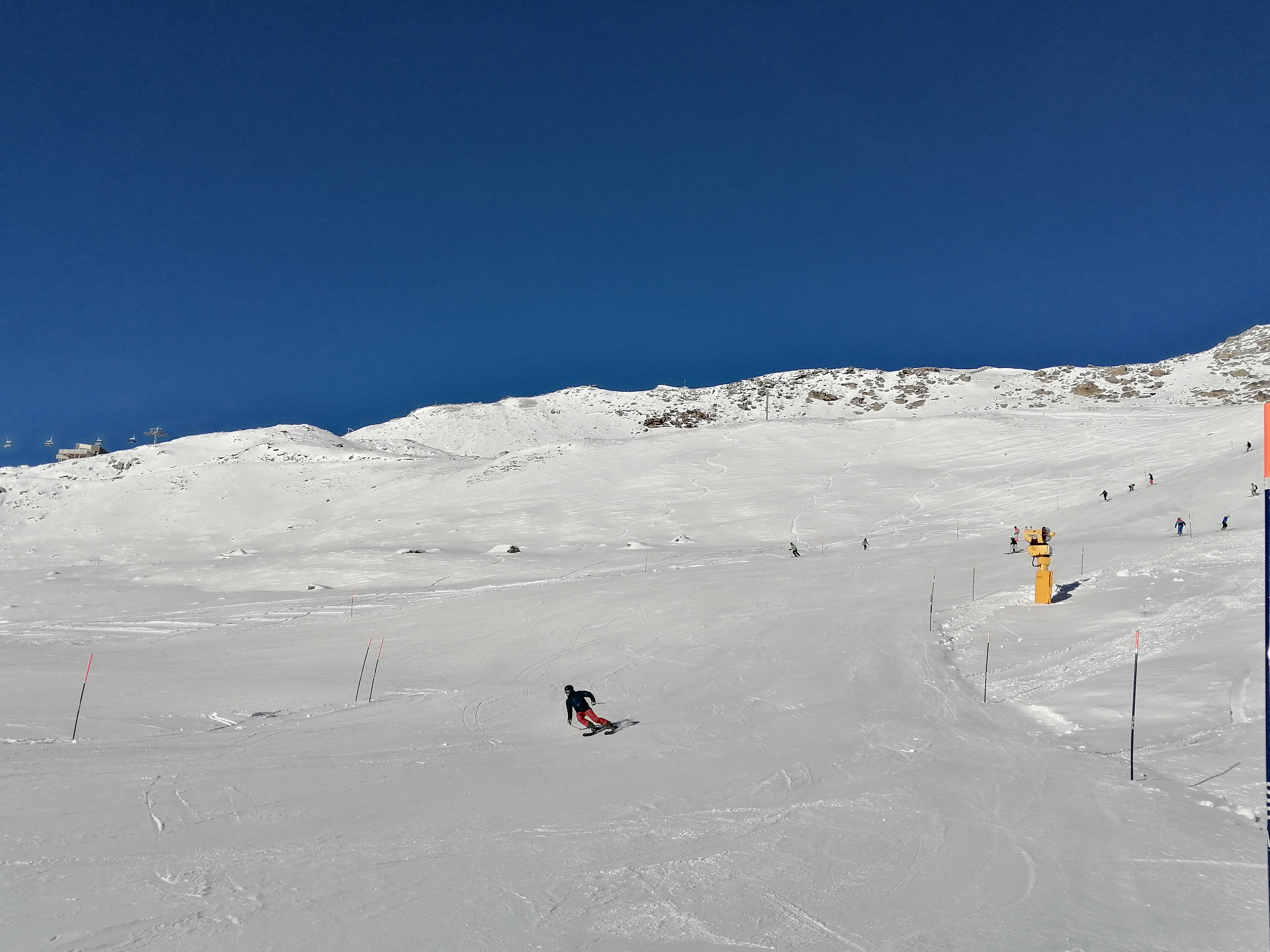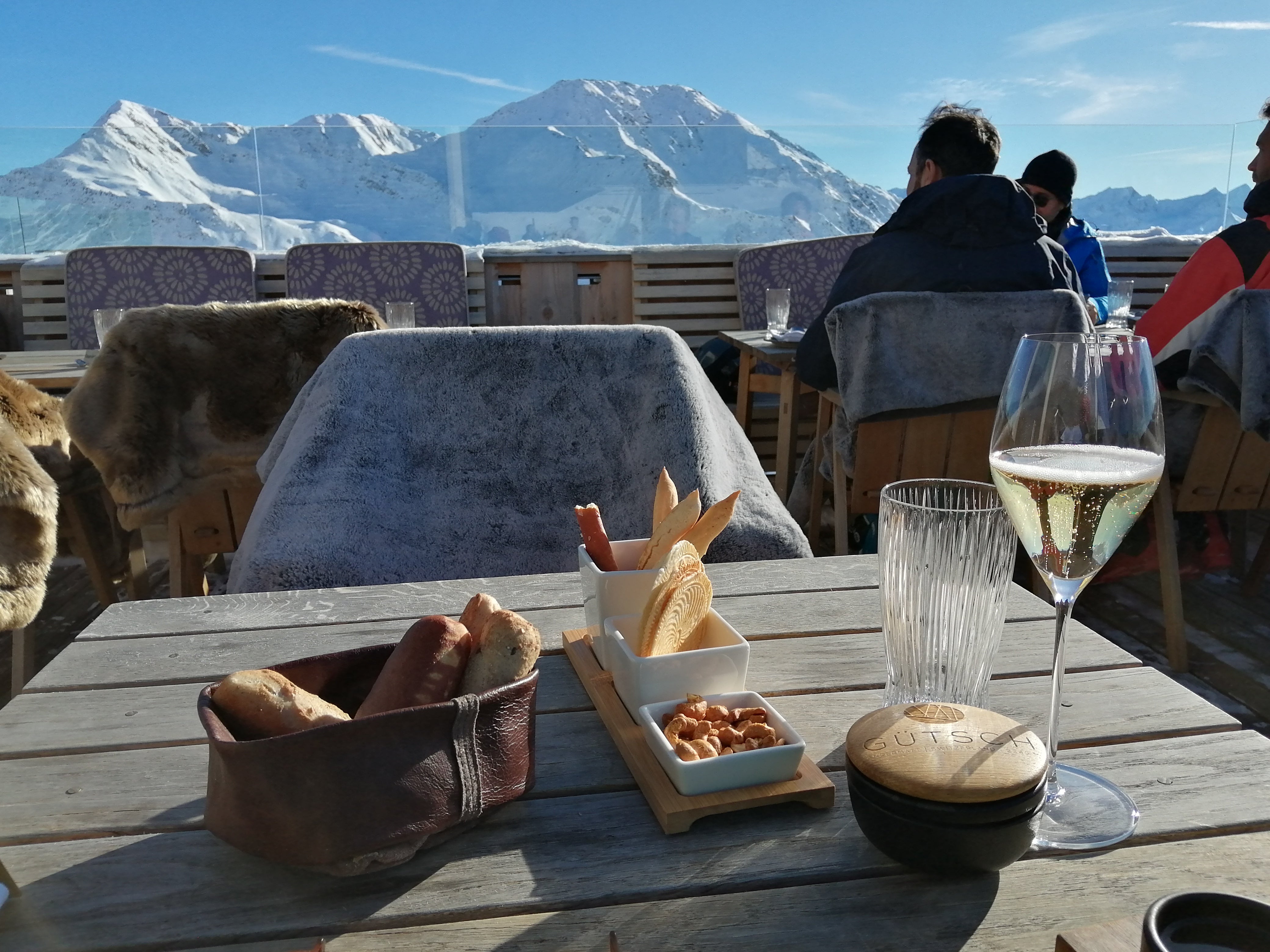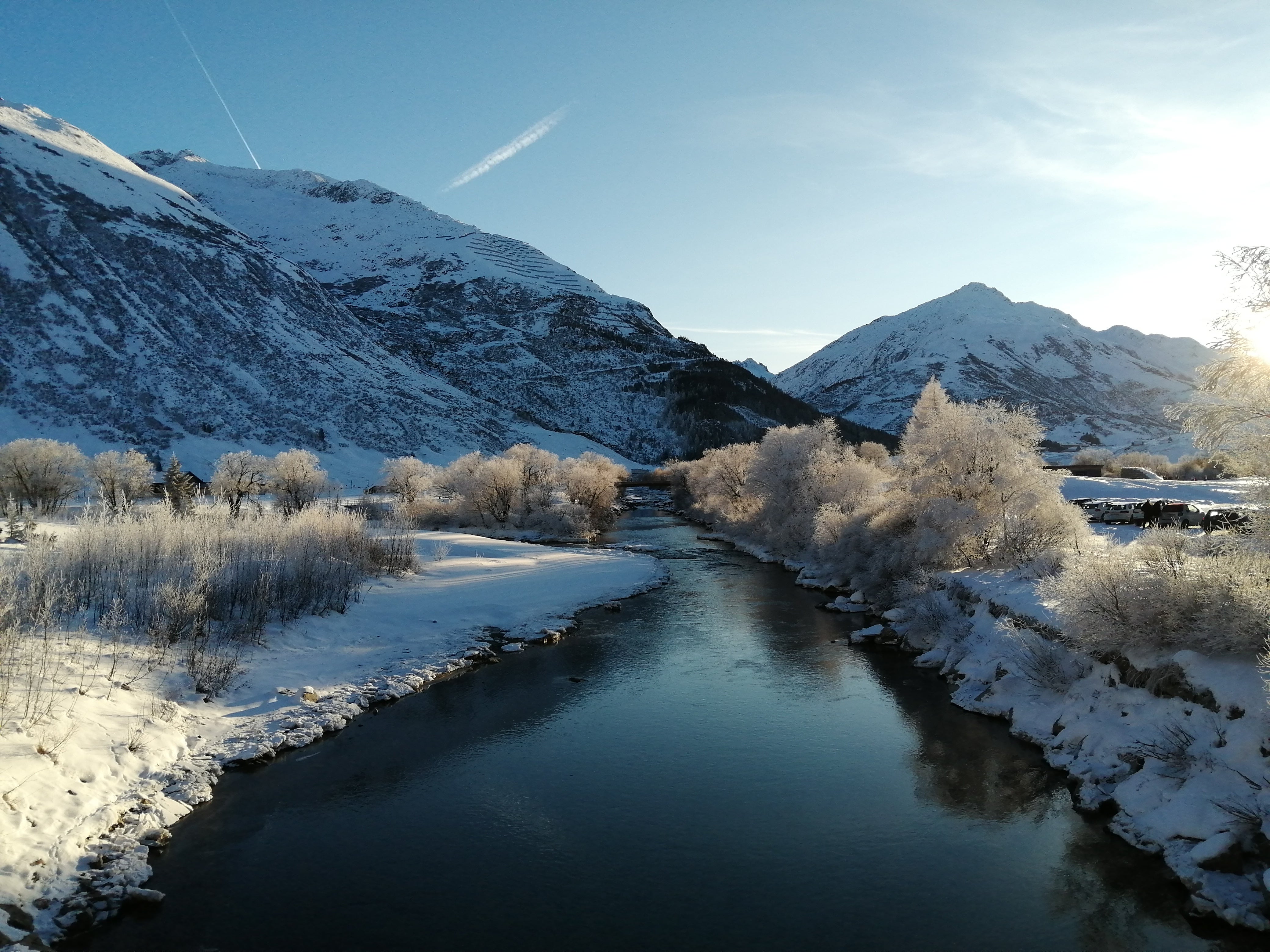
“We don’t want to become like Disneyland, of course – but it’s important to be open to new ideas, to bring new life to the village.”
Bänz Simmen, a local guide with an irrepressible energy and staggering depth of knowledge about Andermatt and the surrounding area, relays this at the end of our 90-minute tour around the Swiss Alpine village. By this point, I have lost all feeling in my feet – it is -10C – on a walk that was meant to last an hour. But Bänz was just bursting with interesting information, from the region’s ice age history and unique geography that meant travellers passed through from all directions, to the village’s more recent transformation from a military base to a world-class ski resort, that it was worth sacrificing some toe sensitivity for.
As someone who grew up here and has such a passion for his home, it’s gratifying, if somewhat surprising, to hear Bänz talk so warmly of the village’s dramatic glow-up. After all, not everyone can accept change so easily. But he is something of a pragmatist, acknowledging that, once the army jobs dried up, the area began haemorrhaging inhabitants. “Tourism was something that we used to do well – it’s just us returning to what we’ve always done,” he says of this latest change in fortunes.

The speed of Andermatt’s rebirth has been breathtaking, thanks largely to the vision – and massive cash injection – of Egyptian billionaire Samih Sawiris. He’s already funnelled a whopping CHF1.5bn (£1.3bn) into the project since 2006, constructing a new resort that will, as it expands, join up with the original village. As part of its development into an upscale destination that can compete with Europe’s plentiful ski playgrounds, Andermatt now has two new major hotels – ultra-luxe five-star The Chedi and the more modest but still pretty slick Radisson Blu Hotel Reussen, where I’m staying – with several more planned, alongside a number of quality restaurants. Part of the template is that each hotel is also built with self-contained apartments available for purchase, with this money helping fund the next stage of development.
If you’re wondering what an Egyptian billionaire could possibly know about running an Alpine ski area, you wouldn’t be alone –it’s a question that Sawiris would likely agree with. Hence the decision to, in 2022, sell the infrastructure to the US behemoth Vail Resorts. The move is likely to see even more investment in developing the ski area. But a key part of the continuing upgrades to both mountain and village was sustainability, Andermatt Swiss Alps’ sustainability expert, Carmen Carfora, tells me.
Tourism was something that we used to do well – it’s just us returning to what we’ve always done— Bänz Simmen
“Andermatt is lucky in that 100 per cent of our electricity is already carbon neutral,” she says. The company’s properties get all their energy from the region’s hydroelectric power stations, plus there are four wind turbines on the resort’s Gütsch mountain.
This is a big win – but there’s more to the sustainability efforts than that. In 2020, Andermatt Swiss Alps Group properly measured its carbon footprint for the previous year for the first time, and did so again in 2021, creating a progress report to be as transparent as possible about where it succeeded and where things need to improve. Diesel piste bashers are an issue, as they are in ski resorts the world over, and the rapid industrial development of the resort has inevitably upped the ante emissions-wise. But there are clear areas in which the resort is making a big push to hit ambitious sustainability targets, such as achieving 100 per cent climate-neutral heating in all buildings; 100 per cent climate-neutral passenger vehicles in the village, alongside the expansion of the electric vehicle charging infrastructure; and increasing the number of women in senior positions throughout the company.
The team has called the initiative to keep the resort on track “Andermatt Responsible”, laying out its mission in a mandate: “Specifically, by 2030 the Andermatt Swiss Alps Group wants its operations to be carbon neutral, to increase the diversity of its employees, and to achieve sustainable profitability.”

I’ve already arrived here by sustainable means; since I’m no longer flying amid the climate crisis, one of Andermatt’s biggest draws is that it can be reached entirely by train. Forget a flight followed by an hours-long coach transfer with an excruciating, travel sick-inducing drive up winding hairpin bends to finish. Instead, I slipped seamlessly from an early morning Eurostar to Paris Gare du Nord; took a swift RER ride to Paris Gare de Lyon; a three-hour train to Basel in Switzerland; another three-hour rail stint to Göschenen; and the final 10-minute cog railway ride up the mountain, arriving straight into resort.
Although it might sound a lot of changes, all were straightforward, with plenty of room for my bulky luggage, plenty of time to transfer (and to buy snacks enroute), and glorious views along the way. Having set off in the morning, I pulled into Andermatt just after 7pm, relaxed, refreshed and ready for dinner – which I ate at my hotel, less than a 10-minute stroll from the station. I can hardly think of a more enjoyable way to kick off a ski trip.
I arrived fortuitously just before opening day, when the Gütsch part of the mountain would be free to explore. Andermatt’s ski area is a game of two halves: Gemsstock, a peak aimed at more intermediate and expert skiers, threaded solely with red and black runs; and the other, more family-friendly side, where sun-facing gentle slopes graded blue and red await in the Nätschen/Oberalp area on the Gütsch. There’s further terrain to explore in the neighbouring Sedrun and Disentis resorts, linked by the Sport Train and the Cuolm da Vi gondola, with the entire ski area offering 180km of pistes in total.
Produce is sourced ‘from valley low to mountain high’, with as much as possible being procured locally
I spent the first day, somewhat counterintuitively, on Gemsstock, warming up lazy ski legs on more challenging pistes in poor visibility, chivvied along by my cheerful Andermatt ski school guide, Marcel. Thankfully his scarlet all-in-one was bright enough to follow even in a white-out. Although there hadn’t been as much early-season snow as during a normal December – from the chairlift we spied patches of brown rock peeping through off-piste stretches where all should be white, a result of climate change that proves very visually the urgent importance of improving sustainability – there was more than enough to tackle the mountain’s 31km of runs.
It’s a good size to really feel like you’ve explored during a day, and still quiet enough that we frequently had entire slopes to ourselves. Particularly gratifying is the whizz from the very top point – 2,961m – down to the village at 1,444m, on pitches that range from deliciously steep to enjoyably wide and relaxed.
The following day is the Gütsch grand opening, and the contrast couldn’t be more stark; it’s a glorious blue-bird day, the sun adding to the joy of cruising down a pleasing selection of blues and reds. Even on launch day, once out of the way of the top lift stations, crowds thin out. Taking a winding blue right the way down to the valley floor, I spot just three skiers in 15 minutes as I take in the sublime view.

The only thing that could improve a day like this is a bougie lunch at altitude – and it doesn’t get more bouie than GÜTSCH by Markus Neff, the Michelin-starred restaurant helmed by the lauded Swiss chef of the same name. Sitting on its sun-bathed terrace by the 2,300 metre-high top lift station, taking in the panoramic vista of the Central Swiss Alps, I’m pleased to find that here, too, sustainability is a key tenet. Produce is sourced “from valley low to mountain high”, with as much as possible being procured locally. Although admittedly my entree of warm, buttery, melt-in-the mouth lobster salad, drizzled with a sweet-sour vanilla vinaigrette is, I fear, unlikely to have come from the Ursern Valley (but it does taste as good as it sounds). The bubbles I wash it down with are, thankfully, completely Swiss.
The 13 Gault Millau Point-awarded Restaurant Bären down in the village, where I eat dinner, also has a gratifying focus on seasonal, local ingredients for its Italian-inspired menu. The yak (yes, yak) is from Andermatt itself; beef, chicken, veal and pork are from the Uri canton or from wider Switzerland. My flavour-packed, coffee-marinated salmon-trout, with a side of Paccheri pasta and cauliflower, is sourced from the neighbouring Grisons region.
Travelling back the next day on my four breezy train connections, sustained by snacks, books and a wonderful array of downloaded films, I marvel at just how enjoyable a more sustainable ski break can be. Andermatt’s latest incarnation may still be fairly new to the tourism game, but Bänz was right – tourism is in this town’s blood. Let’s just hope the future continues to be green, as well as bright.
Travel essentials
Getting there
Take the Eurostar to Paris Gare du Nord, catch the train to Basel from Gare de Lyon, change for a train to Göschenen, and then get the 10-minute cog railway up to Andermatt.
Staying there
Doubles at the Radisson Blu Hotel Reussen from £245, B&B; radissonhotels.com







